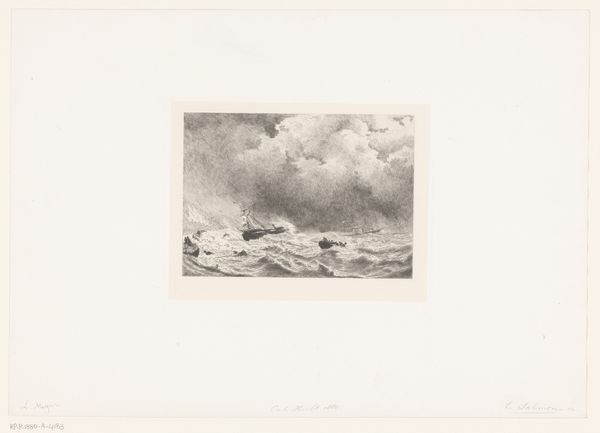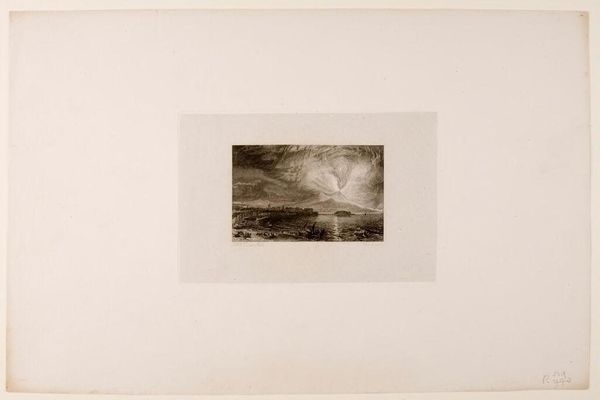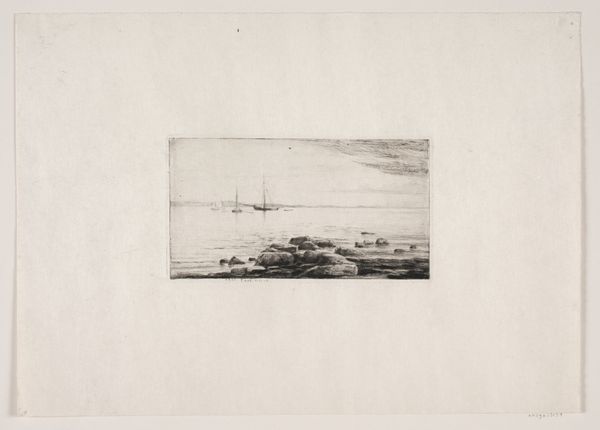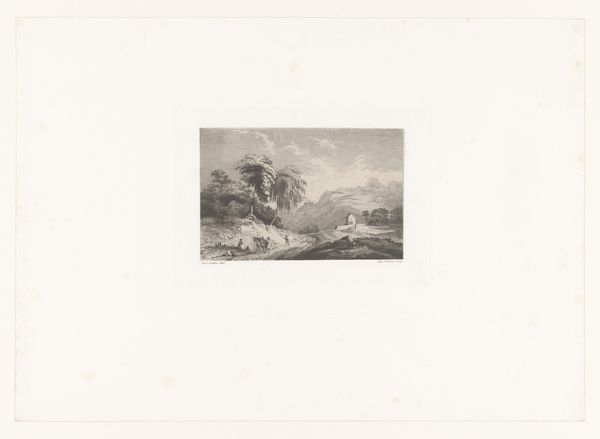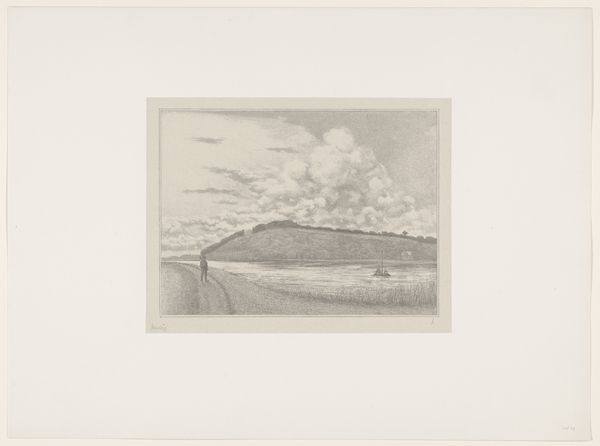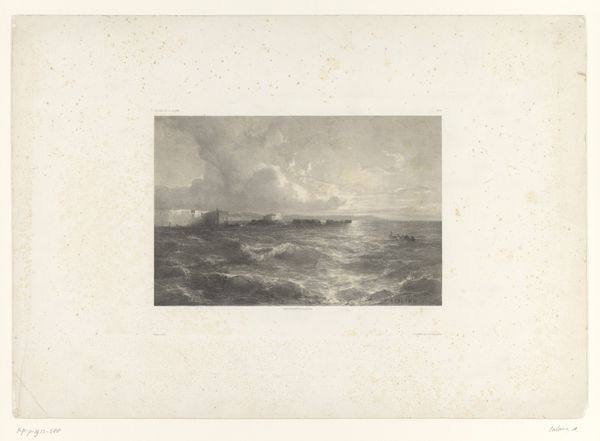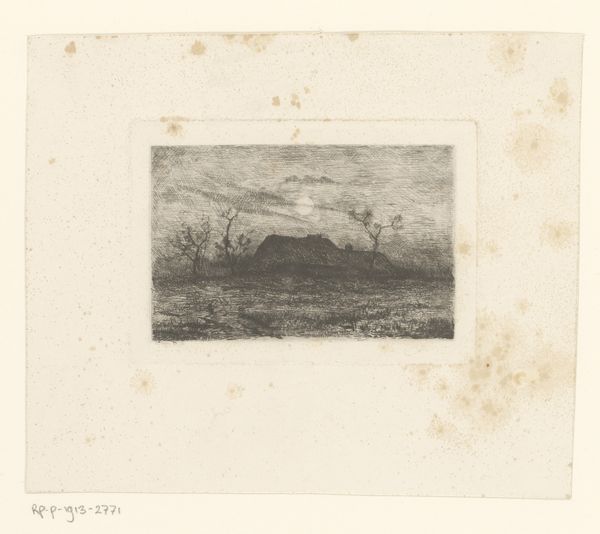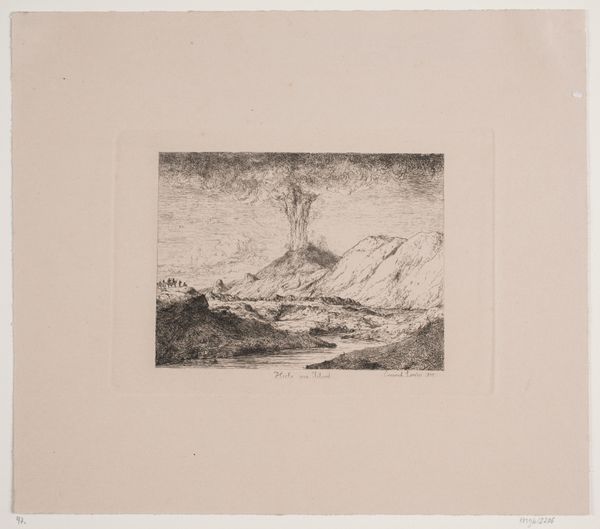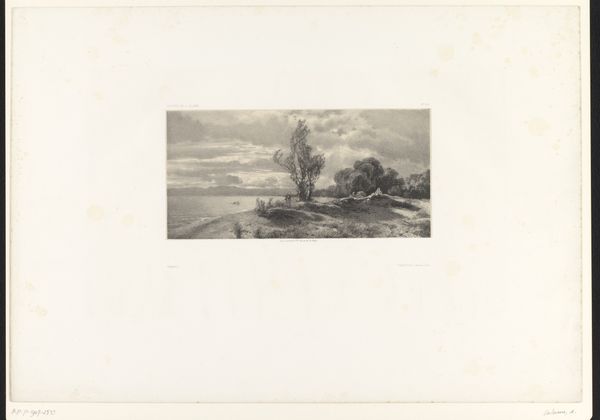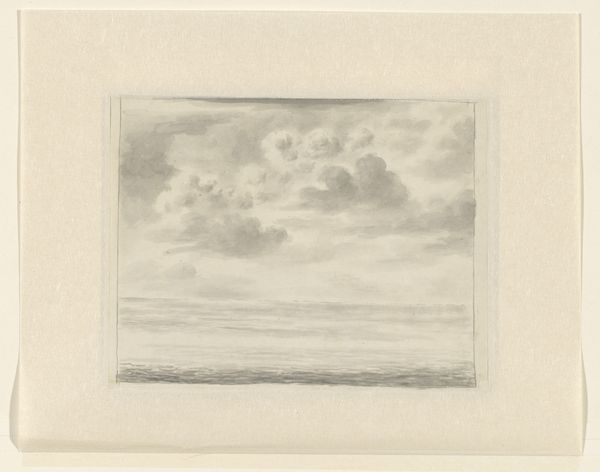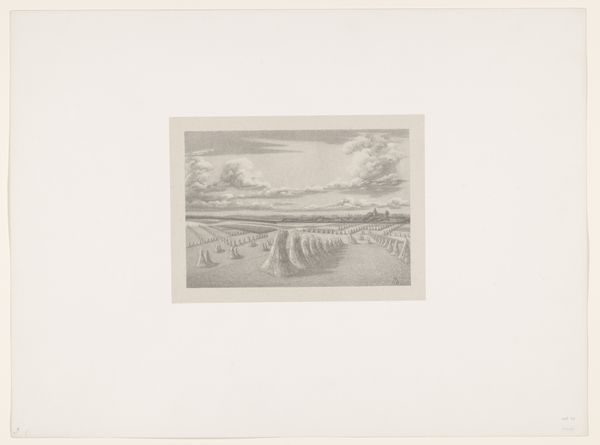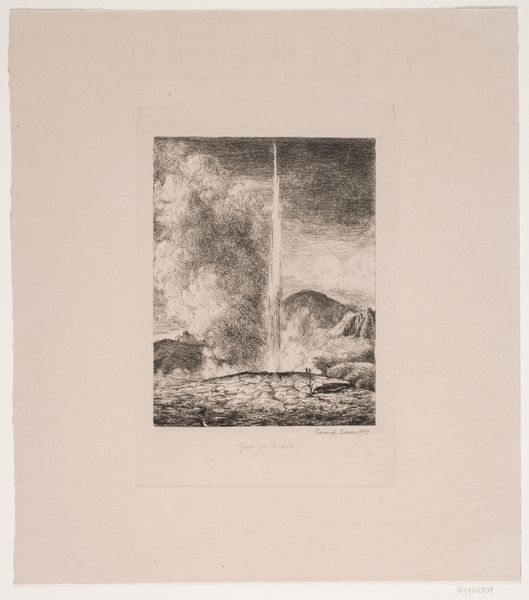
Dimensions: height 471 mm, width 639 mm
Copyright: Rijks Museum: Open Domain
Curator: Standing before us, we have Simon Moulijn's "Gezicht op Laren," created between 1904 and 1905. It’s a pencil drawing on paper, now residing here at the Rijksmuseum. Editor: It has an ethereal, almost dreamlike quality, doesn't it? The muted tones create a very tranquil, possibly even melancholic mood. I wonder how much that reflects the social climate in the early 1900s in the Netherlands. Curator: Indeed. Moulijn was active during a period of significant social and political change. The drawing portrays a calm landscape; considering art's public role then, might that calmness represent a deliberate escape or a commentary on the growing urbanization in the Netherlands? Editor: Or could the conscious lack of distinct human figures be a statement about the displacement felt by rural communities as industrialization pulled people towards the cities? I'm thinking about gender and labor at this moment. What was life like for women and rural farmers then? Curator: The politics of imagery are so interesting here, aren’t they? Look at the details – the artist uses light pencil work to define the imposing clouds while the landscape is treated more subtly, softly grounding us. Editor: And in the very composition of the artwork, where the eye is immediately drawn upward to the sky... is there a message? What could that sky signify? A future horizon? Or something looming? Considering his status as an established artist within particular structures, do we ask who this work might have excluded? Curator: Well, "Gezicht op Laren" presents, on one hand, this incredibly detailed rendering, but simultaneously retains the spontaneity of Impressionism. We can almost feel the open-air influence. This interplay is essential to understanding its aesthetic intent and meaning within art history and its era. Editor: Moulijn has managed to capture the fleeting atmosphere with remarkable precision. Perhaps what appears serene holds a critique of those socio-political undercurrents beneath its gentle surface. The drawing invites the viewer into dialogue. Curator: It leaves us contemplating the intersection between artistry and society. Thank you for lending your thoughtful considerations on Simon Moulijn's piece. Editor: My pleasure. It's always crucial to look at art and its context, while continuously asking how it connects with broader cultural narratives of identity, gender, race, and politics.
Comments
No comments
Be the first to comment and join the conversation on the ultimate creative platform.
